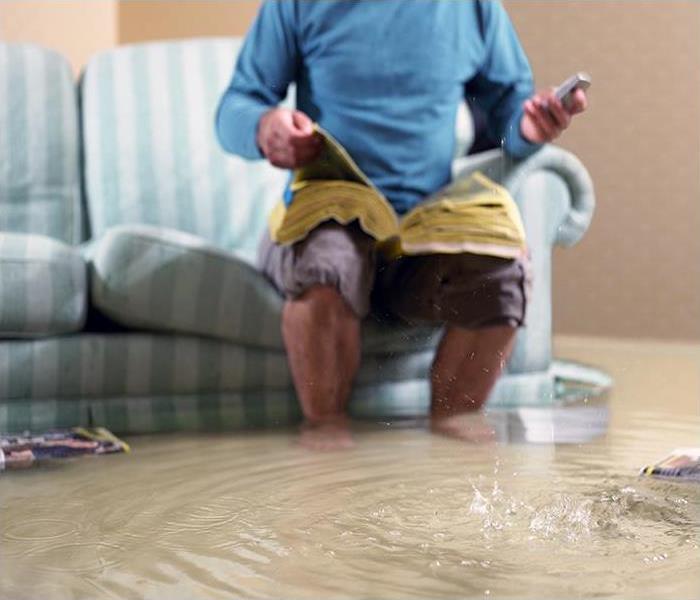The Science Of Permeance – How Flood Damage In Warrington Might Affect Your Home
5/5/2017 (Permalink)
Flood Damage And Your Home
Often, when people talk about flood damage, it is in quite vague terms. After all, a homeowner only needs to know that their property is at risk and must get dried out as quickly as possible. Most aren’t aware, for example, of just how many different types of flood damage can occur within a building. Or, how many different ways just one type of flooding can affect homes.
There are many variables and influencing factors. When it comes to severe flood damage in Warrington properties, one of the most important is the permeance of the structure. Depending on the construction style of your home, the drying process will either be simple or extensive.
Understanding Permeability
In almost all cases, the SERVPRO team carries out an inspection of the water damaged property before starting work. It is the best way to gain a clear picture of the water intrusion and determine how the permeability of the house is likely to affect drying strategies.
Permeability is a measure of how easily water can pass through a material. It shares a direct correlation with the volume of water retained by that material. In other words, the higher the degree of permeability, the longer it takes to dry.
How Permeability Affects Structural Drying
The 1950s (Post War) Houses
Many of the homes built in the fifties are made up of lots of different building materials, each with their own ranges of permeability. Such variation can make restoration difficult, but SERVPRO has the expertise to set up multiple drying operations within one home, depending on how fast the materials are taking in water.
In this scenario, we are dealing with concrete slabs, concrete internal walls, and external brick walls. The potential permeance readings for each are 2.4, 0.8, and 3.2 respectively. So, you can see how and why the building is going to dry out at differing rates.
Timber and plaster are prone to absorbing water quickly and in large amounts. While this is a negative outcome, the positive side of the equation is that, if the water enters easily, it usually comes out easily too. We often refer to them as materials which ‘wet out’ fast.
Modern Timber Frame Homes
Typically, this type of construction sits on a concrete slab (or flat). On top of this is a thermal barrier. Sometimes, the barrier is above the concrete, and there is plywood or screed flooring on top of that. The potential permeance readings for the barrier and flooring are 1.6 and 0.7, respectively.
The internal walls are timber, and this material has a much higher rate of permeability (around 50). The way we approach modern homes is to assume then that the external shell requires little drying, but the internal structure is especially vulnerable to flooding. The power of our drying techniques depends on the impact of extreme differential drying speeds.
When flooding hits your home, the best place to turn for help is SERVPRO of West Pensacola. You can find us in your local area, and our team can start repairs within hours. Call us 24/7 at (850) 469-1160. You can count on our flood damage repairs.





 24/7 Emergency Service
24/7 Emergency Service
